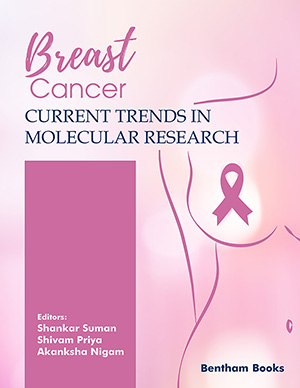Abstract
Breast cancer is a common death-related cancer in women globally. Early
and non-metastatic stage breast cancers are curable in 70-80% of the patients, while
advanced-stage distant organ metastatic breast cancers are incurable with present
treatment options. Although multiple risk factors are associated with breast cancer,
among them, genetic predispositions in BRCA1 and BRCA2 genes are the most
causative factor for breast cancer malignancy. The initiation and progression of breast
cancer is a multi-step process, which can initiate either in ducts or lobules of the breast
tissues. As time progresses pre-invasive lesions form of breast neoplasm transforms
into atypical ductal hyperplasia (ADH), ductal carcinoma in situ (DCIS)/lobular
carcinoma in situ (LCIS), and eventually become invasive carcinoma. The molecular
mechanisms behind the initiation and progression of breast cancer are not completely
understood. However, epithelial-mesenchymal transition (EMT) is the assurance of
malignancy which disrupts endothelial integrity and therefore, it increases the
spreading of cancer cells and facilitates metastasis. After the epithelial-mesenchymal
transition of tumor cells, tumor cells invade and migrate the neighboring as well as
distant tissues, cross the endothelial barrier and enter the blood, and attach to a
secondary site, forming metastases. In this chapter, we have reviewed an overview of
the molecular mechanisms of breast cancer progression.
Keywords: EMT, Hyperplasia, Malignancy, Treg, Tumor cells.






















